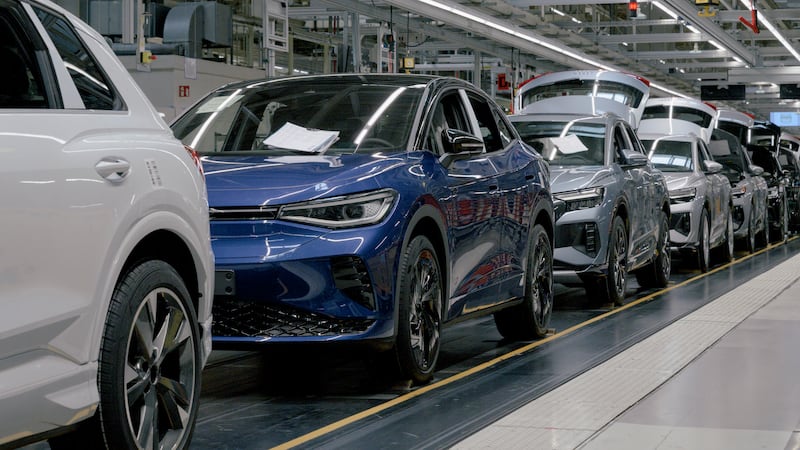We normally think of Continental as a maker of the four round black things that sit at each corner of the car and which you only think of when a Garda gives you a checkpoint warning that they're looking a bit thin on tread. The truth is that while Continental is best-known as a tyre manufacturer, it also has its Germanic fingers in all sorts of other pies, from vehicle software and electronics, to fuel systems and more.
And it has just possibly developed a system which, Wyatt Earp-like, could clean up the diesel-dirtied streets of the Frankfurt motor show. At the show, Continental has demonstrated a new 48-volt mild-hybrid diesel system which it claims can reduce emissions of nitrogen oxide (NOx — the nasty gas at the heart of the recent diesel scandals) by as much as 60 per cent, and cut fuel economy by as much as four per cent. Almost ironically, the demonstration vehicle for the system is a Volkswagen Golf GTD, but it could be enough to rehabilitate diesel in terms of public opinion, a vital move if car companies are going to sell enough to pay for the upcoming electric revolution.
The system is designed to prolong the life of diesel powerplants, which is potentially of benefits to consumers (thanks to their day-to-day fuel economy) and to Continental itself (because it has invested heavily in diesel engine parts and systems supply).
The first thing that Continental's engineers did to the Golf was to rip out its VW fuel injection system and replace it with Continental's own PCRs5 piezo common rail injection system, which works at a pressure of 2,500-bar. That system is clever enough to allow multiple injections of diesel fuel per combustion cycle (similar to but more complex than the MultiJet system developed by Fiat in the early 2000s) and it also know to squirt some fuel in after the combustion burn.
Why? Because that fuel ten travels down the exhaust to the Selective Catalytic Reduction catalyst, mounted close to the engine. As the fuel hits the catalyst it heats up and burns, in turn heating the catalyst itself to its operating temperature, and allowing it to work on reducing NOx much earlier than would otherwise be the case. This post-combustion burn also helps keep the catalyst up at its optimum temperature when the car is dawdling around town. Continental claims that this means the catalyst warms up as much as eight minutes faster than in a conventional system, and on its own contributes as much as 37 per cent of the overall NOx reduction, according to the new WLTP fuel economy and emissions tests.
However, that on its own would mean an increase in fuel consumption of around four per cent. So, to combat this, Continental has also fitted a 48-volt mild-hybrid system, including a starter-generator, a small 15kW electric motor and a very compact lithium-ion battery. That electric motor can fill in gaps in the engine’s power delivery, which cuts down on sudden peaks of NOx production caused by sharp burst of throttle around town (which Continental calls ‘phlegmatization’) and it actually means that the engine is four per cent better off in fuel consumption terms, and sees a three per cent reduction in Co2 emissions.
Finally, there’s a downstream AdBlue injection system to knock yet further NOx emissions on the head. Alongside all of this mechanical tech is a new software system which Continental calls connected Energy Management (cEM).
In total, Continental claims that the measures featured on the test vehicle deliver that 60 percent reduction in nitrogen oxide emissions, while at the same time achieving a drop in fuel consumption compared to a Euro 6 Diesel standard car. “In other words we have resolved a classic conflict of objectives in diesel engine development,” says José Avila, “showing that a clean diesel engine with emissions well within the legal limits doesn’t have to consume more fuel.”
Will it be enough? Will car makers, en masse, adopt such expensive technology to try and save the diesel engine? Or will they look at the looming 2040 deadlines of France and the UK to cull internal combustion sales, and simply decide that Continental's cleverness is just too late? As the debate over diesel, petrol, and electric rumbles on, there's no clear answer yet but Continental may have just found a way to improve the image of diesel in the public's mind.














